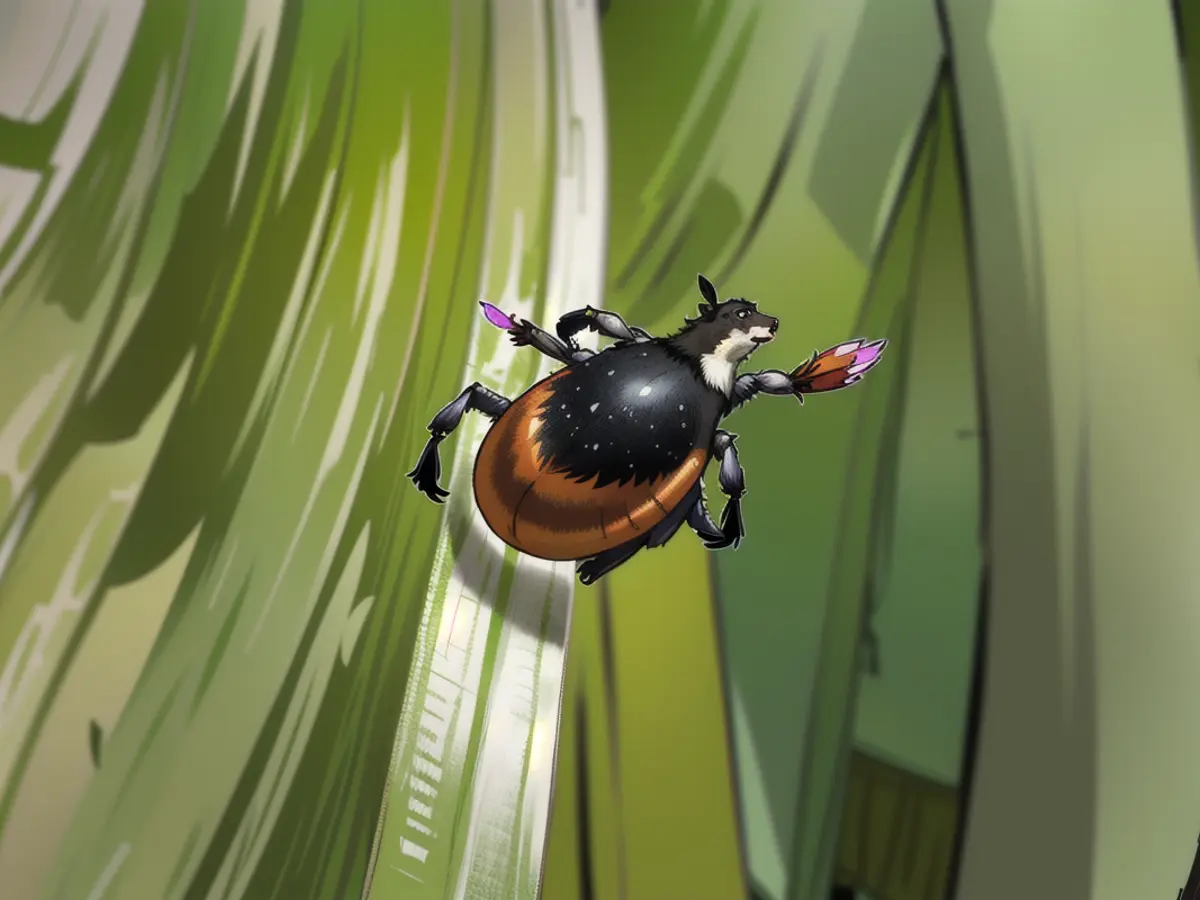Removing Ticks and Essential Information About These Bloodsuckers
Parasitic blood-sucking arachnids known as ticks are spreading deadly diseases and becoming more common. Here's what you should know about them.
Ticks: The Basics
Ticks are close relatives of mites and distant cousins of spiders. There are over 800 species worldwide, with 84 documented in the United States. However, only a handful in the US transmit diseases to humans. These include blacklegged ticks (also called deer ticks, which feed on various animals), lone star ticks, American dog ticks, and brown dog ticks.
A tick's life cycle consists of egg, larva, nymph, and adult stages. Both male and female ticks feed on blood by penetrating the skin with their barbed, straw-like mouthparts. Female ticks drink blood until they're thoroughly engorged, signaling they're ready to lay eggs.
"When you see a fully engorged female," explains Kait Chapman, a Nebraska extension educator and urban entomologist at the University of Nebraska-Lincoln, "that means she's going to lay her eggs and start the life cycle process over again."
Ticks' appearance and size change depending on their stage and blood intake. "The nymph blacklegged tick would blend right in on a poppy-seed bagel," says Dr. Thomas Mather, a professor of public health entomology at the University of Rhode Island and director of the school's Center for Vector-Borne Disease and its TickEncounter Resource Center. In contrast, an engorged adult female can swell to the size of a pea.
Tick Bites and Diseases
Tick bites can occur year-round, and careful removal is essential to minimize disease risk. To remove a tick, use tweezers to grasp it near the skin, pulling straight out. Avoid twisting or squeezing the body, as these actions may cause the tick to regurgitate more, increasing the chances of disease transmission.
After removal, consider drowning the tick with hand sanitizer or rubbing alcohol. Photograph the tick or retain it for identification purposes. The University of Rhode Island's TickEncounter website provides tools for identifying ticks based on coloration, size, and geographic location.
Specific species of ticks carry different diseases. Larvae and nymphs of blacklegged ticks (feeding on white-footed mice) can carry the bacterium Borrelia burgdorferi, which causes Lyme disease upon transmission. Unlike Lyme disease, anaplasmosis is caused by a different bacterium (Anaplasma phagocytophilum) transmitted by some ticks, including the deer tick and Western blacklegged tick. Nymphs may pick up this bacteria from infected white-footed mice.
In a 2023 study, researchers identified a protein involved in the transmission of the harmful bacteria Anaplasma phagocytophilum from ticks to human hosts. This protein could be a crucial target for preventing the spread of anaplasmosis. However, further research is needed before practical applications can be developed.
Anaplasmosis symptoms include severe headaches, fever and chills, vomiting, and fatigue.
Preventing Tick Bites

These diseases can be debilitating or even deadly. Thus, it's crucial to prevent tick bites when possible. Though the exact causes of tick attraction vary, ticks are typically passive hunters. Factors such as carbon dioxide emissions can attract them.
To stay safe:
- Wear long-sleeved shirts and pants when in tick-prone areas.
- Tuck pants into socks or boots.
- Apply insect repellent with at least 30% DEET.
- Check for ticks regularly—after outdoor activities, bathing, or sleeping.
- Remove any ticks you find immediately.
Research on tick attraction might lead to new ways of preventing tick bites and associated diseases.
In contrast to a common misconception, ticks don't simply fall from trees. They often remain at the tip of tall blades of grass, waiting for a suitable host to come along. When someone brushes past, ticks grasp onto their clothes or skin.
The Environmental Protection Agency has approved insect repellents containing DEET, picaridin, and oil of lemon eucalyptus to safeguard individuals against tick bites. However, these substances work differently against ticks than they do against mosquitoes.
DEET causes discomfort for ticks, causing them to detach due to pain on their feet, rather than interfering with their ability to locate their prey. Picaridin and oil of lemon eucalyptus, on the other hand, don't have the same impact. Once the insect repellent dries, it no longer burns the ticks' feet, making it less effective.
To prevent tick bites, consider covering your skin and tucking in the bottoms of your pants into your socks. Additionally, tossing your clothes in the dryer for half an hour can kill ticks, even before washing them.
Mather prefers using Permethrin-treated clothing as it's far more effective compared to insect repellents. Permethrin disrupts the nerve conduction in ticks, causing them to become overly excited which eventually leads to their demise. Depending on the location, examining ways to exterminate ticks in your yard may also be feasible.
Though precautions may seem excessive, Mather firmly believes these measures are necessary. "We reside in a world with an increased tick population and increased exposure," he added.
Climate change may contribute to the proliferation of ticks, but Mather emphasized that the presence of white-tailed deer appears to be a key factor. As their numbers have risen in areas with higher human density, people have become more likely to encounter ticks that reproduce on these deer.
With due care and precautions, however, ticks should not prevent you from enjoying nature. "We don't want ticks to dictate your life," Chapman concurred. "You should still be able to venture outdoors, albeit conduct frequent tick checks. It's essential to take the time and perform these inspections."

Read also:
- No food or coffee for three days, just juice, juice, juice instead: a field report
- How to get rid of the flu if you have caught it
- Doctors warn of penis fractures and other injuries during the Christmas season
- Corona or flu epidemic? These pathogens are making us cough and sniffle right now
Source: edition.cnn.com








